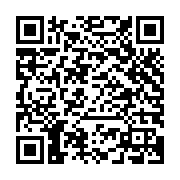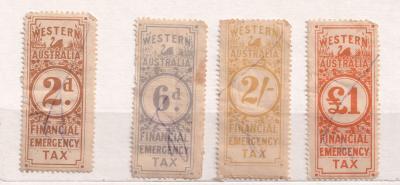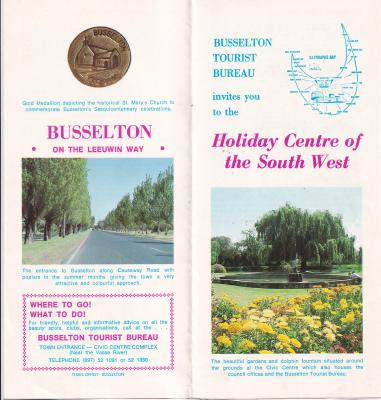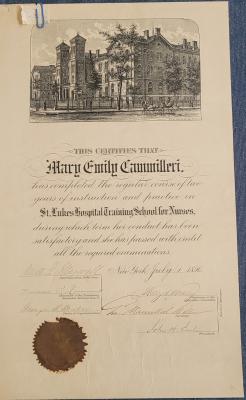Autoharp / Chorded Zither
c. 1900The autoharp body is made of a dark wood, and has a generally rectangular shape, with one corner cut off. A straight wood ridge is located 3 cms from the top and slanted edges and serves as a bed for the strings, which resemble those used in pianos and concert zithers. There are 30 metal strings with one missing. The larger tuning pins are made of wood and the string nuts on the short straight edge are metal.
The box with the chord buttons has a description of the chords that could be played (key G, D, F, C). The panel also has fancy gold painted scrolls on the top and bottom. On the main panel is a description of the various octaves for the different strings. There are felt pads underneath the box which are pressed against the strings when chord buttons are pushed and the box covers a guitar-like sound hole in the main panel.
On the bottom surface there are 3 brass bolts that probably were used to anchor some sort strapping to support the harp in a playing position.
Charles F. Zimmermann, a German immigrant in Philadelphia, was awarded a patent in 1882 for a “Harp” fitted with a mechanism that muted strings selectively during play. He called the zither-sized instrument using this mechanism an “autoharp" but this model did not closely resemble the modern autoharp. It is not known if Zimmermann ever produced these instruments commercially. In the meantime Karl August Gütter of Markneukirchen, Germany, built and obtained a British patent c1883-4 for model that he called a Volkszither that closely resembled the modern autoharp. However back in the states in 1885 Zimmermann began production of instruments with the Gütter design which he called autoharps and included his own name and patent number. As a result, Zimmermann is widely but incorrectly regarded as the inventor of the instrument in its now familiar form.
Details
Details
There are no markings that give any indication of who made this instrument.
Despite being called an Autoharp, this instrument is actually a chorded zither and played in the same manner as a zither, with the addition of chord bars.
Autoharps are often used in bluegrass and country music and it was a favourite instrument of the Carter family.
Related Objects
Related Objects
Other items from Busselton Historical Society
- Busselton Brass Band - Bass Drum
- Western Australia Duty & Tax Stamps Collection
- Tourism Brochures - Busselton
- Souvenir Ribbon - Busselton Bypass 2000
- Certificates - Mary Cammilleri Wood
- Monarch Button Accordion
- Music Lyre
- Postcard - Queen Street, Busselton
- Zither Tuning Key
- Ludwig & Ludwig Jingle Cymbal
- Booklet - Busselton Bowling Club Centenary 1904-2004
- Busselton Lighthouse Timekeepers Log 1912-1915
Scan this QR code to open this page on your phone ->










